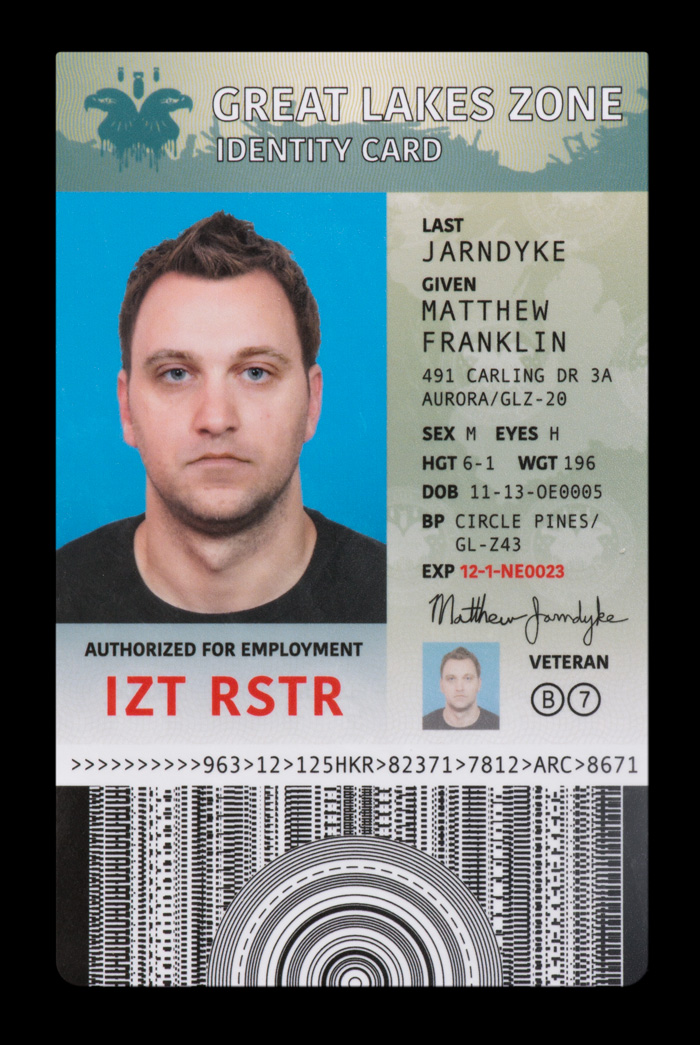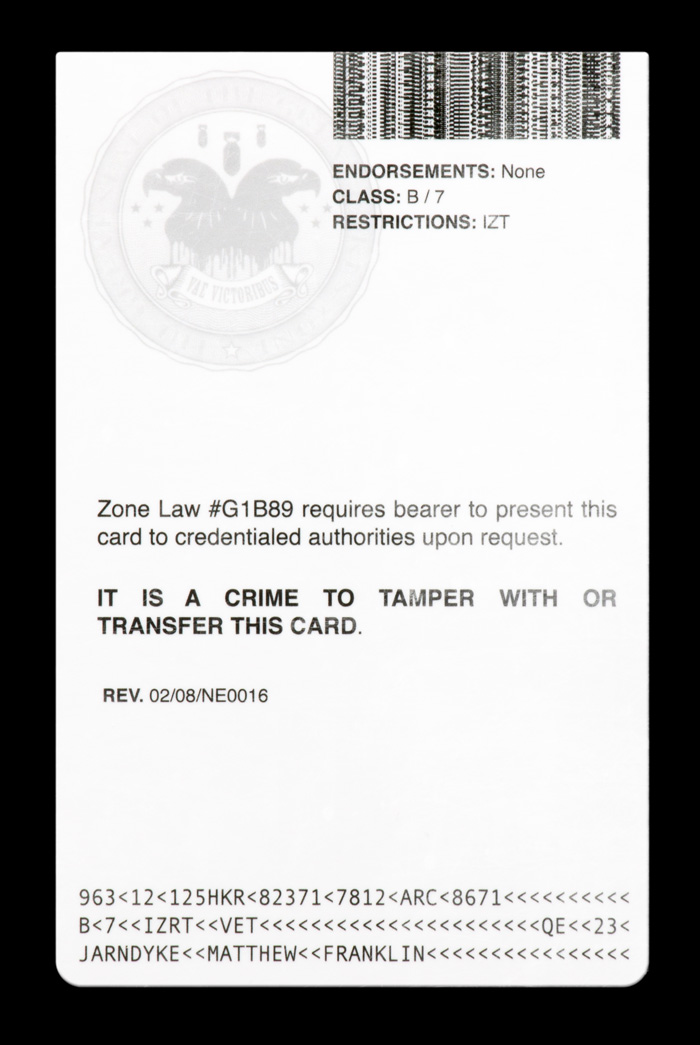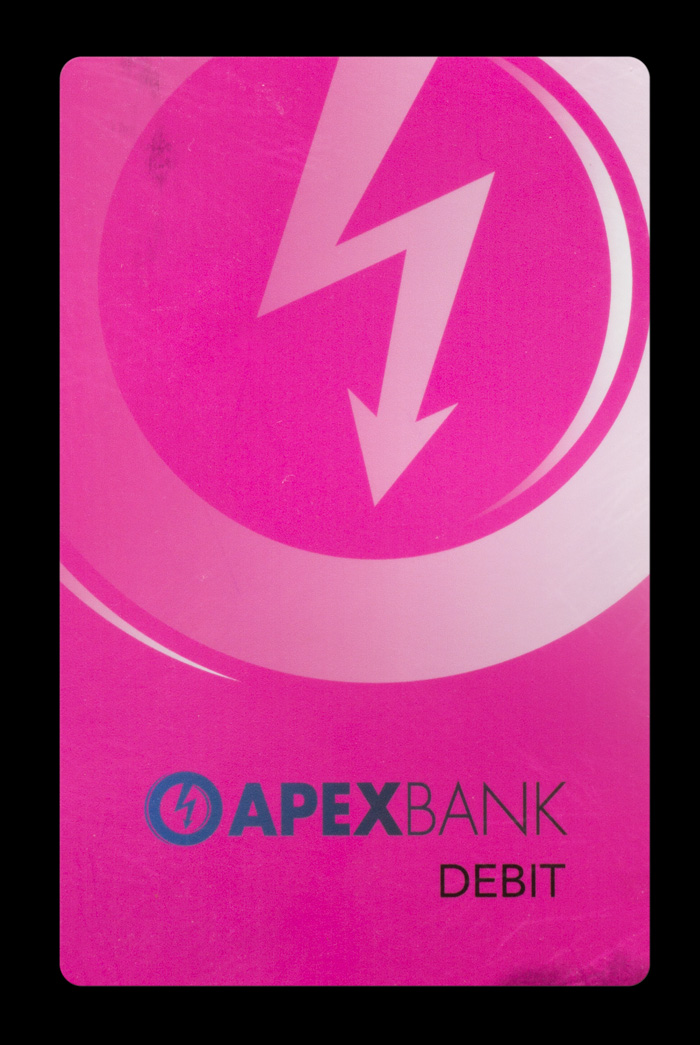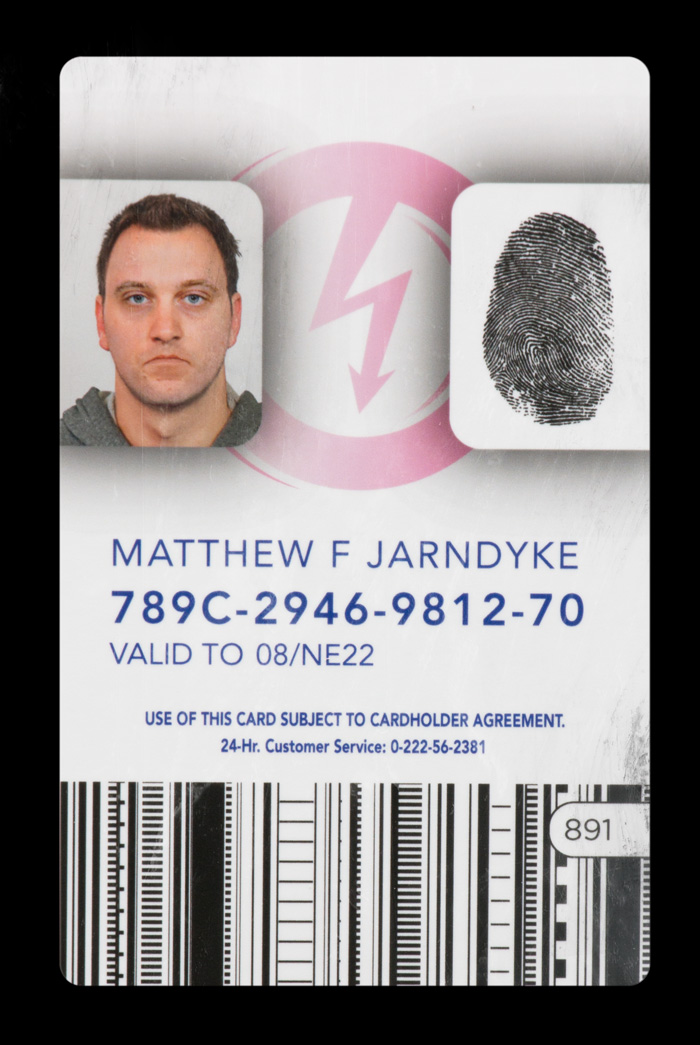ID card
3.31” x 2.06” (8.5 cm x 5.3 cm)
No object in the Jarndyke Ark has yielded more personal details about Matthew Jarndyke than his identification card, which provides us not only with images of their owner, but his home address, height, weight, and more. As a state-issued document, the card also supplies tantalizing clues about the nature of life in the Great Lakes Zone, from the lay of the landa to its approach to interzonal travel,b from its justice systemc to its sense of aesthetics.d
a Woodard SA and Rodriguez WO. None Shall Pass: River Boundaries in the GLZ and Beyond. Ark Review. 2006. 2(24);67-71.
b Hotte UL and Racktell H. The Lansing Crux: Ascertaining Methods of State Control in the GLZ. Ark Review. 1993. 12(2);142-154.
c Watson W. Interzonal Travel Restrictions. Arkology Research Papers. 1999. 7(1);26-42.
d Bosco AD, Tompkins P, and Greske OI. Use of mirrored iconography in GLZ artifacts. Arkology. 1979. 23;192-201.





